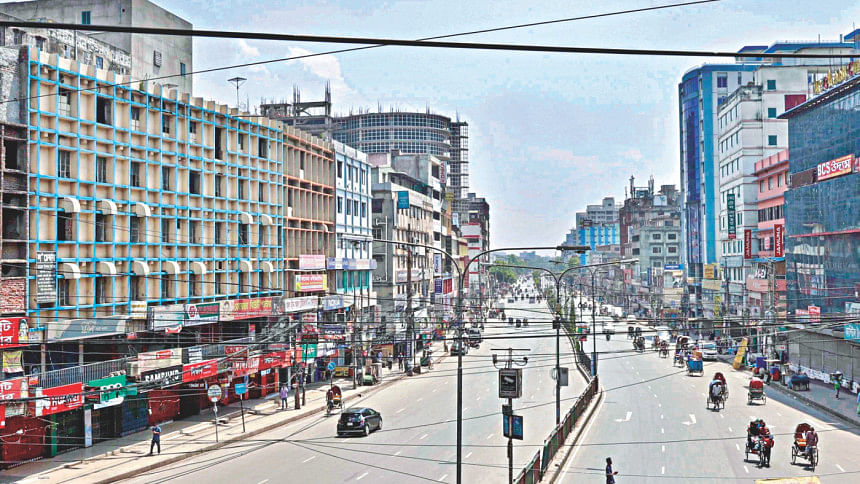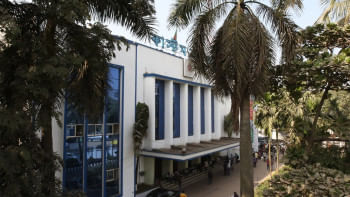Stimulus package geared towards the long road to normalcy

The Tk 72,750 crore package announced by the prime minister promises to provide support to small and large businesses in industry and services to tide over the disruptive stage of the pandemic.
There is Tk 30,000 crores presumably for large enterprises in industry and services and Tk 20,000 crore for micro, small and medium enterprises (MSMEs).
The money will be channelled through banks in the form of working capital loans at 9 per cent interest rate.
There is an additional Tk 12,750 crore infusion into the Export Development Fund (EDF) and Tk 5,000 crore for pre-shipment credit finance to facilitate the production of exports prior to shipment and hopefully to promote backward linkages to benefit the deemed exporters.
This complements the Tk 5,000 crore support for the directly export-oriented industries announced earlier.
What are the fiscal, financial, balance of payments and monetary implications of introducing such a support package to keep businesses afloat and protect labour incomes when the economy is on a shutdown mode?
The direct fiscal cost of the package is actually not as large as it appears on the surface.
The government will be paying a 4.5 per cent subsidy on interest on the Tk 30,000 crore for large scale industries and 5 per cent on the Tk 20,000 crore for MSMEs. This together constitutes Tk 2,350 crore.
In addition, the government will pay Tk 310 crore subsidy on credit from the EDF.
The finance division officials have been quoted in the media as saying that the initial Tk 5,000 crore announced for the directly export-oriented industries will also be provided from the budget.
These together constitute Tk 7,660 crore additional burden on the budget, which is equivalent to 16.5 per cent of the original budgetary provisions for subsidies, incentives and cash transfers and 0.3 per cent of GDP.
There is an implicit contingent liability equivalent to a maximum 2.5 per cent of GDP if there are large scale defaults that banks may pass on to the budget.
Offsetting this at least in part is the increase in profits of the energy sector state-owned enterprises due to decline in the cost of importing oil and related products.
The burden of financing is on the banks. They are facing liquidity crunch as indicated by the rise in borrowing from the repo market before the partial shutdown of the economy. This is likely to have worsened.
The Bangladesh Bank (BB) will need to provide adequate liquidity to the banks. The banks can borrow from the BB at the 5.75 per cent repo rate.
However, the tenor of BB refinancing of banks will need to match the tenor of banks' loans to the enterprises to avoid aggravating a maturity mismatch problem that already exists.
Constitution of a special refinancing window addressing these issues will be needed sooner than later.
The default risk is on banks. They have to elevate the skill and prudence of their risk management to make sure that the wilful defaulters and those enjoying rescheduling facilities do not access these funds.
The demand for loans from these new facilities will most likely exceed supply after the dust settles on the modality of implementation.
To incentivise use of the funds for payroll, the banks could use matching fund rules requiring the borrowers to share part of the payroll burden, particularly in cases of large and established enterprises.
However, the loan size has to be adequate to keep the borrowing companies afloat during the crisis. This is particularly true for MSMEs, many of whom may need financing to pay rent and electricity bills as well.
Given the aggregate financing constraints facing each bank, they will need to make choices similar to the choices the medical professionals in Italy are making on which COVID-19 patient to put on the scarce ventilators.
You cannot spread the money too thin. What makes the bankers' decision to choose the borrowers and the loan size different from that of the doctors is that their action has no immediate cost in terms of human lives.
They can, in fact, screen out enterprises that cannot survive on their own under normal circumstances.
Technically sound risk assessment, insulated from cronyism and corruption, can help minimise the job losses due to bankruptcy of the rationed out non-viable enterprises.
Some analysts have qualms about the integrity of the whole process being so reliant on banks. What is the alternative? Surly not the bureaucratic machinery.
One solution is to channel the money only through those rated among the top ten on corporate governance by the BB or international rating agencies such as the Moody's.
They are unlikely to risk their corporate goodwill by deliberately mishandling the funds.
Banks specialising on MSME financing should be preferred for channelling the funds for the MSMEs.
Can the financial package aggravate balance of payment pressures?
To the extent the package facilitates the production of existing orders that the buyers will take or exporting personal protective equipment (PPEs), the package will in fact alleviate some BoP pressures by cushioning the decline in exports.
It is unlikely to create significant pressure on imports if the support goes mostly to financing payroll expenditures.
Note that the pressure on import payments could get some respite from the collapse in international oil and related product prices.
These can be significant if our energy state-owned enterprises take advantage of the situation in time.
The worry on the external front is the likely decline in remittance inflow due to shut down in Bangladesh's key international labour markets, the lagged effects of the oil price decline on remittance and the increase in health-related imports.
The other sources of non-official finance in the financial account may also dry out.
Preserving the adequacy of reserves and mobilising concessional external finance for the support package are the best insurance options.
A flexible exchange rate could buffer deeper than anticipated pressure on the external balance.
The impact of the package on the money supply is likely to be tolerable.
Even assuming the BB fully refinances the loans provided by the banks, including the initial one for direct exporters, and considering the additional infusion into the EDF, the additional credit constitutes 6.9 per cent of the outstanding stock of credit to the private sector at the end of January.
With the year-on-year private credit growth down to 9.2 per cent in January and dim prospects for credit demand from usual business expansion related borrowings, the package is unlikely to breach the BB's 14.8 per cent private credit growth target for fiscal 2019-20.
In fact, there is space for more, particularly to finance livelihood support to the poor and the vulnerable.
A relief programme of the same magnitude as the loans for business, financed by government borrowing from the BB will constitute slightly over 29 per cent of the stock of reserve money, 37.6 per cent of public sector debt to the monetary system and 5.6 per cent of the stock of broad money at the end of January.
Broad money growth could reach 18.3 per cent if both the business and livelihood packages are fully monetised and there is no other source of increase in money supply between the months of February and June.
These are significant but not alarming numbers, given the relatively modest 48 per cent broad money to GDP ratio at the end of fiscal 2018-19.
However, they do underline the criticality of exercising fiscal austerity, as envisaged by the prime minister, in order to preserve the monetary and fiscal space for fighting the impact of the pandemic going forward. And Bill de Blasio, the mayor of New York City, warned, "This is not a sprint, it's a marathon."
Could such a monetary and fiscal expansion fuel inflation?
Assume most of the monetary and fiscal support goes to contain labour income losses as apparently intended. The resulting fillip in consumption demand can be no more than what would have prevailed in the absence of the coronavirus pandemic.
Perhaps, it would have been even less, because of some increase in precautionary demand for savings.
The composition of demand created by the support package is likely to be tilted towards essential goods and services.
The inflationary effect thus depends on the state of play on the supply side of these essentials.
Disruption in supply chains caused by the mitigation measures could create some inflationary pressure.
If the policymakers want to lose sleep worrying about inflation, they better worry about managing the mitigation measures to minimise disruptions to the supply of essentials, particularly ensuring full harvesting of the boro crop, without raising the risk of virus spread.
The assumption that the support reaches only the working labour may be a little heroic.
The bigger the leakage, the higher the chances that poverty will increase.
Even if there is some inflation, the poor will benefit if the support reaches them directly.
If the bulk of the assistance is captured by the connected elite, anything can happen, including capital flight.
In that case, we risk facing both increased poverty as well as macroeconomic instability.
Bangladesh's poor plus the vulnerable population equal about 126 million. A support package for the poor and the vulnerable equivalent to the ones for businesses can cover 80.7 million people for three months at a monthly cash transfer of Tk 3,000 per capita. That would constitute about 64 per cent of the poor and the vulnerable.
This is sobering. It underlines the importance of community resource mobilisation and donor financing to complement the government's effort.
The author is an economist

 For all latest news, follow The Daily Star's Google News channel.
For all latest news, follow The Daily Star's Google News channel. 



Comments